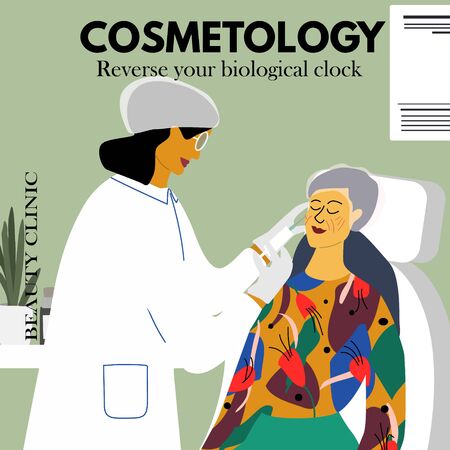1. Understanding Common Allergies in Aesthetic Practice
In the realm of UK aesthetic medicine, a thorough understanding of common allergies is paramount for safeguarding patient safety and ensuring successful outcomes. Allergic reactions remain a significant concern, as patients may be exposed to a variety of substances during cosmetic procedures. Among the most prevalent allergens are local anaesthetics such as lidocaine, preservatives like parabens, latex found in gloves or medical devices, and certain active ingredients within dermal fillers or topical skincare products. Even seemingly benign components, such as fragrances and dyes, can trigger hypersensitivity responses in susceptible individuals.
Medical practitioners must also be cognisant of medication-related allergies, particularly antibiotics used for prophylaxis or post-procedural care, and non-steroidal anti-inflammatory drugs (NSAIDs) given for pain management. Each of these agents carries distinct risks, with potential reactions ranging from mild skin irritation to severe anaphylaxis. Additionally, cross-reactivity between different classes of drugs or compounds can further complicate risk assessment.
The implications of overlooking these allergies are substantial. Adverse events not only compromise patient wellbeing but can also lead to reputational damage and legal repercussions for the clinic. As such, meticulous history-taking—including previous allergic episodes, family history of atopy, and prior exposure to relevant substances—should form the cornerstone of pre-procedural assessment. Furthermore, open communication regarding product ingredients and possible side effects empowers patients to make informed decisions about their treatment options.
2. Safe Anaesthesia Protocols in the UK
Anaesthesia is a crucial component of aesthetic medicine, ensuring patient comfort and procedural success. In the UK, stringent protocols are observed to minimise medical risks, particularly those associated with allergies and adverse reactions. Understanding the types of anaesthesia available and adhering to national guidelines is vital for practitioners.
Common Anaesthesia Options in UK Aesthetic Practice
| Anaesthesia Type | Typical Use | Advantages | Potential Risks |
|---|---|---|---|
| Topical Anaesthetics (e.g., lidocaine creams) | Minor procedures (fillers, laser treatments) | Non-invasive, rapid onset, easy application | Allergic dermatitis, localised reactions |
| Local Infiltration (e.g., lidocaine injections) | Surgical excisions, thread lifts | Targeted effect, longer duration of action | Systemic toxicity if overdosed, rare allergic responses |
| Nerve Blocks | Larger facial areas or complex procedures | Effective regional anaesthesia, reduces need for systemic agents | Nerve injury, haematoma, rare hypersensitivity reactions |
| Conscious Sedation (oral or IV) | Lengthier or more invasive treatments | Anxiolysis and pain control without general anaesthesia risks | Respiratory depression, drug interactions, allergic reactions |
Guidelines and Best Practice Standards
The General Medical Council (GMC) and British Association of Aesthetic Plastic Surgeons (BAAPS) provide comprehensive guidance for safe anaesthesia administration. Practitioners must complete a thorough pre-procedure assessment, including:
- Detailed allergy history: Documenting previous reactions to medications or anaesthetic agents.
- Medical evaluation: Assessing comorbidities that could increase anaesthetic risk.
- Medication review: Identifying potential drug interactions or contraindications.
- Informed consent: Clearly communicating risks, benefits, and alternatives to the patient.
Patient Assessment Checklist for Safe Anaesthesia Administration
| Assessment Step | Description/Consideration |
|---|---|
| Allergy Enquiry | Ask about known allergies to drugs, latex, adhesives or topical preparations. |
| Medical History Review | Check for cardiovascular disease, respiratory issues or liver/kidney function impairment. |
| Current Medications Check | Review anticoagulants, antihypertensives and other relevant prescriptions. |
| Pertinent Examination Findings | Note skin condition at intended injection sites and airway assessment if sedation planned. |
| Anxiety & Expectation Management | Discuss procedure steps and set realistic outcomes to ensure cooperation. |
| Written Consent | Provide clear documentation of discussion and agreement prior to proceeding. |
The Importance of Safe Administration Practices in the UK Setting
Anaesthesia should always be administered by trained professionals following up-to-date protocols. Emergency drugs and resuscitation equipment must be readily accessible. All staff should be proficient in recognising and managing complications such as anaphylaxis. By adhering to these rigorous standards, UK aesthetic clinics maintain high safety records while prioritising patient well-being throughout every procedure.

3. Identifying and Managing Adverse Reactions
Aesthetic treatments, while generally safe when performed by qualified professionals, are not without risk. In the UK, it is crucial for practitioners to be vigilant in recognising and managing adverse reactions promptly to ensure patient safety and maintain trust in the field. Understanding the types of adverse reactions that may occur—both during and after procedures—forms the cornerstone of effective risk minimisation.
Common Types of Adverse Reactions
Adverse reactions can range from mild and transient to severe and potentially life-threatening. The most frequently encountered reactions include:
Allergic Reactions
These may manifest as localised swelling, redness, itching, or systemic symptoms such as urticaria, angioedema, or in rare cases, anaphylaxis. Allergic responses can be triggered by anaesthetic agents, injectables (such as dermal fillers), or topical products used during aesthetic procedures.
Vasovagal Responses
Some patients may experience fainting or dizziness due to anxiety, pain, or needle phobia. While generally benign, these episodes require immediate attention to prevent injury from falls.
Infection
Although proper aseptic technique significantly reduces this risk, post-procedural infections can still occur. Signs include localised redness, warmth, swelling, pain, or discharge at the treatment site.
Delayed Hypersensitivity Reactions
Certain fillers or implants may provoke delayed inflammatory responses days to weeks post-treatment. These typically present as persistent swelling or nodules at the injection site.
Prompt Recognition: What to Look For
Early identification of an adverse event is vital. Practitioners should be alert to immediate changes such as unexpected pain, rapid swelling, respiratory distress, sudden rash, or cardiovascular symptoms. Patients should also be educated on warning signs that warrant urgent review after they leave the clinic.
Tailored Management Strategies
Immediate Response Protocols
If a severe allergic reaction is suspected—such as anaphylaxis—activate emergency protocols immediately: call for assistance (dial 999), administer intramuscular adrenaline if indicated, and provide supportive care until help arrives. For milder reactions, antihistamines and corticosteroids may suffice.
Aftercare and Follow-Up
For non-life-threatening issues like mild infection or localised swelling, initiate appropriate treatment (e.g., antibiotics for infection) and arrange close follow-up. Documentation of all events is essential for medico-legal purposes and ongoing quality improvement.
Conclusion: Proactive Prevention
A comprehensive understanding of potential adverse reactions—paired with swift recognition and bespoke management—ensures optimal outcomes in UK aesthetic medicine. Establishing clear protocols tailored to local guidelines and maintaining open communication with patients before and after procedures are vital components of best practice in minimising medical risks.
4. Pre-procedural Patient Assessment and Screening
In the context of UK aesthetic medicine, comprehensive pre-procedural patient assessment is not only a best practice but also a regulatory requirement. Ensuring patient safety begins with meticulous medical history taking, allergy screening, and thorough risk evaluation before any anaesthetic or aesthetic intervention.
The Importance of Medical History Taking
A detailed medical history is vital in identifying potential risks associated with allergies and anaesthetic reactions. Practitioners must obtain information about previous allergic responses, medication use (including over-the-counter and herbal supplements), chronic illnesses, and past surgical or aesthetic procedures. In the UK, this process is governed by strict data protection standards such as GDPR, emphasising both accuracy and confidentiality.
Allergy Screening Protocols
Allergy screening should be tailored to the specific requirements of each procedure and patient profile. The table below outlines recommended areas for inquiry during initial consultations:
| Screening Area | Key Questions | UK-Specific Considerations |
|---|---|---|
| Drug Allergies | Have you ever had an adverse reaction to antibiotics, local anaesthetics, or any prescribed drugs? | Cross-check with NHS allergy records if available |
| Food Allergies | Do you have known food allergies (e.g., nuts, latex cross-reactivity)? | Consider possible cross-contamination in clinic supplies |
| Latex Sensitivity | Any previous reactions to gloves or bandages? | Ensure availability of latex-free alternatives as per CQC guidance |
| Anaphylaxis History | Have you ever experienced anaphylactic shock? | Emergency protocols must align with UK Resuscitation Council standards |
Pre-procedural Assessments: UK Regulatory Context
The Care Quality Commission (CQC) and General Medical Council (GMC) provide frameworks that mandate risk assessments prior to all invasive or minimally-invasive treatments. This includes baseline observations (e.g., blood pressure, heart rate), documentation of ASA classification, and identification of contraindications. For those with significant allergy histories or comorbidities, referral to an NHS specialist or obtaining formal allergy testing may be warranted.
Key Steps in Pre-procedural Assessment
- Thorough review of medical and allergy history using standardised forms compliant with UK regulations.
- Risk stratification based on current health status and previous reactions.
- Clear documentation in accordance with GMC guidelines for consent and record-keeping.
- Communication of identified risks and management plans to the patient in plain English.
A Proactive Approach to Patient Safety
The emphasis on robust assessment prior to any aesthetic procedure reflects the UK’s high standard for clinical governance. By adhering to these protocols, practitioners minimise the likelihood of adverse events related to allergies or anaesthesia, ultimately safeguarding patient wellbeing and professional reputation.
5. Emergency Preparedness and Response
Effective emergency preparedness and response are vital components of risk management in UK aesthetic medicine, especially when considering the potential for allergic reactions, anaesthetic complications, or other adverse events. Clinics must adopt a proactive approach, guided by UK best practice, to ensure both patient safety and regulatory compliance.
Staff Training and Simulation Drills
All clinical staff should be trained in immediate life support (ILS) protocols, with regular simulation drills focusing on the recognition and management of anaphylaxis, airway compromise, and cardiovascular emergencies. Training should be updated annually and include scenario-based exercises tailored to common risks within aesthetic practice.
Emergency Equipment and Medication Readiness
Aesthetic clinics must maintain easily accessible emergency kits containing adrenaline auto-injectors, antihistamines, corticosteroids, oxygen delivery systems, and bag-valve masks. All equipment should be checked routinely for expiry dates and functionality. Clear signage indicating the location of emergency supplies is essential for rapid access during critical incidents.
Structured Emergency Protocols
Clinics should implement written emergency response protocols that align with guidance from bodies such as the Care Quality Commission (CQC), General Medical Council (GMC), and Resuscitation Council UK. These protocols must cover immediate actions in case of suspected anaphylaxis—such as cessation of the procedure, administration of intramuscular adrenaline, summoning emergency services via 999, and ongoing monitoring until handover to paramedics.
Effective Communication and Documentation
In the event of a medical emergency, clear communication among team members is paramount. Assign roles in advance—such as who calls for help, who administers medication, and who documents the sequence of events. Accurate documentation is not only a legal requirement but also crucial for post-incident review and continuous improvement.
Post-Emergency Review and Continuous Improvement
Following any medical emergency, conduct a thorough debrief with all involved staff. Review adherence to protocols, identify areas for improvement, and update training or processes as necessary. This reflective practice supports a culture of safety and aligns with UK expectations for clinical governance in aesthetic medicine.
6. Legal and Ethical Considerations in Managing Medical Risks
In the realm of UK aesthetic medicine, practitioners carry significant legal and ethical responsibilities when it comes to minimising medical risks such as allergies, anaesthesia complications, and adverse reactions. A robust understanding of these obligations is essential for safe, compliant practice and for maintaining public trust in the sector.
Documentation Standards
Comprehensive and accurate documentation is a cornerstone of best practice in UK aesthetics. Practitioners must record detailed patient histories, including any known allergies or previous adverse reactions to anaesthesia or injectables. Meticulous notes on assessments, procedures performed, products used, and post-procedural advice not only ensure continuity of care but also serve as critical evidence should any medico-legal issues arise. The General Medical Council (GMC) and other regulatory bodies expect clear, contemporaneous records as part of professional conduct standards.
Informed Consent
Obtaining informed consent is both a legal requirement and an ethical imperative in the UK. Patients must be given clear, jargon-free information about the risks, benefits, alternatives, and potential complications related to aesthetic interventions—including the specific risks of allergic or anaesthetic reactions. Consent should be a process rather than a one-off event; patients need adequate time to ask questions and reflect before proceeding. Documentation of this process is vital, with signed consent forms accompanied by evidence of verbal discussions and patient understanding.
Incident Reporting and Regulatory Compliance
If an adverse reaction or medical emergency occurs, practitioners are obliged to follow established incident reporting protocols. This includes immediate clinical management for patient safety, followed by prompt notification to relevant bodies such as the Care Quality Commission (CQC), Medicines and Healthcare products Regulatory Agency (MHRA), or the National Reporting and Learning System (NRLS), depending on the nature of the incident. Transparent reporting not only meets legal requirements but also contributes to wider learning within the sector, helping others avoid similar events.
Ethical Practice Beyond Compliance
While legal duties provide a baseline for practice, ethical considerations often demand more. Practitioners should foster open communication with patients—especially if things go wrong—by offering honest explanations and apologies when appropriate. The principle of do no harm underpins all decision-making; where uncertainties exist regarding potential allergic or anaesthetic risks, erring on the side of caution reflects best ethical practice.
Conclusion
UK aesthetic practitioners must navigate a complex landscape of legal and ethical responsibilities when managing medical risks associated with allergies, anaesthesia, and adverse reactions. By prioritising meticulous documentation, robust informed consent processes, diligent incident reporting, and transparent patient communication, clinicians can ensure they meet both regulatory standards and uphold the highest levels of patient care in aesthetic medicine.


